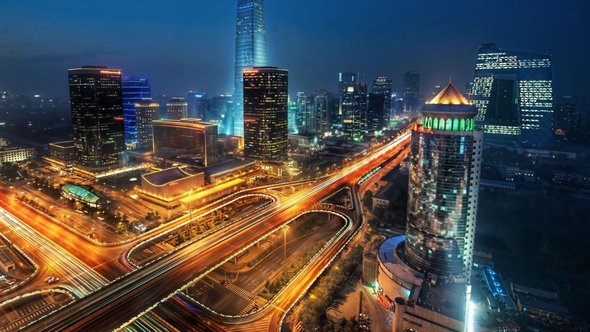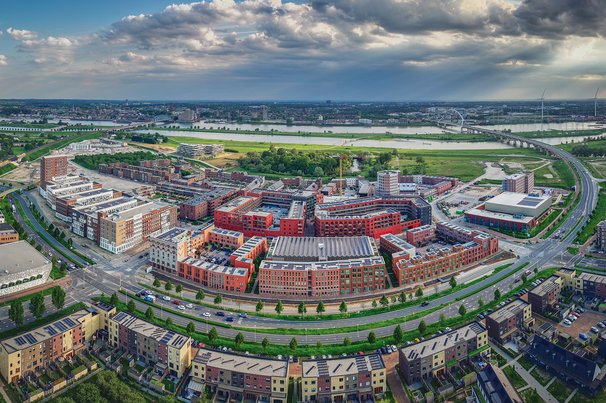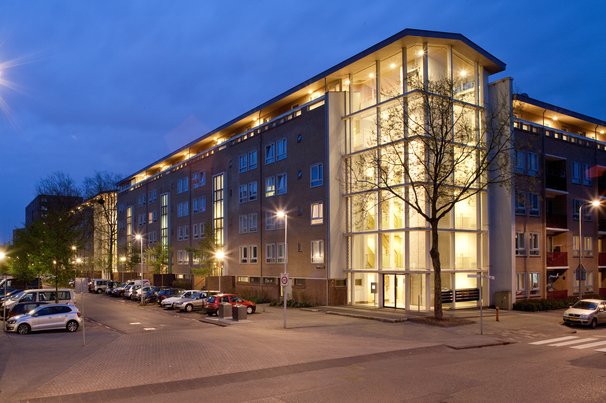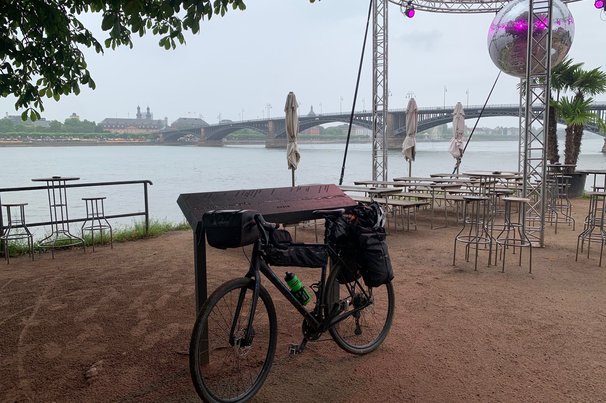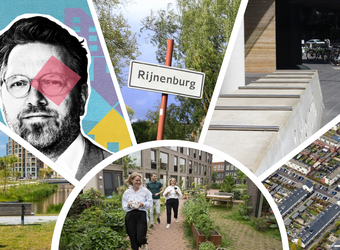Verslag Safer, cleaner and healthier cities thanks to the extensive use of new technologies. This, in a nutshell, is what smart city-thinking is all about. The idea is that in an urbanized world global environment issues are best tackled on an urban scale. But does the ‘smart city’ also provide a social perspective? And how do we imagine the ‘smart citizen’?
During the sixth edition of the International Architecture Biënnale Rotterdam (IABR) Urban by Nature, two symposia were organized by the PBL Netherlands Environmental Assessment Agency. The first meeting, on June 5th, addressed The infrastructure of the Smart City. PBL director Maarten Hajer introduced the theme. He doubts if society has reached a tipping point, as some now claim. There is however, Hajer says, no question about the fact that the way we handle food, raw materials, energy and mobility raises major questions. An efficient urban metabolism is the common challenge of the 21st century. In other words, our cities have to get smart.
To program or be programmed
In a 'smart city' physical and digital infrastructures are means by which to make the city more economical, efficient and liveable. Hajer notes that if he would accept all the invitations to talk about 'smart cities' he would constantly be on the go. It fascinates him that the whole world, from Canada to China, refers to this concept as if there were a solution to large global issues at the moment that they are projected on the cities. The concept is being applied in a number of ways. There is, for example the driverless car, that makes traffic and transport more efficient and safer. Or the urban control room, in which the integration of cameras, sensors, computer models and other advanced ICT makes it possible to monitor and manage urban dynamics. In Rio de Janeiro such a 'city dashboard' has been developed and put into place in advance of World Cup football.
At the same time, explains Hajer, it looks like large, generic systems are becoming a thing of the past. Is the future not in the hands of 'smart citizens', self-reliant and initiating individuals, who, thanks to apps, are capable of measuring air pollution concentrations in the city or who use the internet to find out what the noise pollution levels are around Schiphol? “The discussion about 'smart cities' is broad, and my question is: what do we want from it?" Hajer asks the audience to consider the following proposition: "If we do not program the ‘smart city’, then the ‘smart city’ progra us."
Government as directing participant
Jan Hendrik Dronkers, Ministry of Infrastructure and the Environment, and Marleen Stikker, Waag Society, give their own interpretation on the 'Smart City' concept. Dronkers relates urban development to the government’s shifting role in the handling of spatial issues. He outlines the perspective of a government that is looking for solutions in collaboration with local stakeholders. Shaping the city of the future is no longer equivalent to the construction of line infrastructure from a national point of view. The immediate environment is the starting point, says Dronkers. "Infrastructural issues become design and planning issues for which citizens, national government, local government and other stakeholders on an equal footing find a solution. The government is a participant, but one who acts from the interest of the public and provides the required direction.”
In projects like Room for the River, this method has been put into practice. But also the chosen method of tunnelling the motorway in the city of Maastricht, multifunctional and integrated into the city, is the result of a participatory process. "And it works, I can assure you. When I visited Maastricht recently, I was congratulated by a group of citizens with the project. An asset to the city, they said." Dronkers imagines a city where residents actively participate in solutions for infrastructure and where they travel through it smoothly, using various modes of transportation, thanks to smarter transportation methods, more effective use of infrastructure and better management of traffic flows.
"If you cannot open it, you do not own it"'
Marleen Stikker argues that "enthusiastically embracing technology to solve problems" has a downside. She observes an ambiguous attitude towards technological progress. Unbridled optimism about the potential goes side by side with fear and uncertainty about the consequences. Who knows what? "There's a race going on: who has the most data and can make the best analysis?" It is possible to create a real-time image of the city based on huge data streams and using simulations to predict patterns and trends. This is increasingly the basis for policymaking and for interventions. But, warns Stikker, each visualization is also a story based on a set of data, open to interpretation. Which means that you would want and need to know where the underlying data come from and how they are compiled. "My motto is:" If you cannot open it, you do not own it."
From ticket to chipcard
The digital systems that are being developed by no means promote transparency, says Stikker. "The underlying system of the public transport card knows more about my travel behaviour than I do, and I do not know anything about the system. The reciprocity in the relationship between technology and user is gone. Bus and train tickets allowed me to pay for the transport of other people. With my chipcard this is impossible. The technology actually makes us dumber and limits our possibilities, not in the least socially. While from the perspective that things can always be more efficient, more and more systems like this are developed. "Whether it concerns smart meters for energy use on a household level or entire systems to control urban traffic flows: infrastructure for measuring, aggregating and analysing data - the digital infrastructure of the 'smart city' - according to Stikker would have to have an open character. So that ‘smart citizens’ of tomorrow can actually own both the issues at stake and the solutions offered. This would require openness of systems and data to be a condition in all tenders. "I think we need to build the ‘smart city’ on the basis of mutual trust.
Separating waste, separating responsibilities
After a little break four guests present in brief their perspective on the topic. Stefan Kuks (Dutch Water Authorities) discusses the multifunctional role of water in the urban metabolism. Urban water is for example a carrier of drug residues, and as such a source of urban water pollution. A water authority could monitor the emissions of households. "When you execrete a large quantity, the government responsible for its removal could ask you not to let your urine flow into the sewer, but to collect it and hand in the bag separately. But are water authorities allowed to collect such information?” Kuks, like Stikker, notes that 'smart' concepts raise important questions about the relationship between the public and private domain.
Guido Braam (Circle Economy) outlines the finiteness of linear consumption. Raw materials will run down eventually, so it is important to treat waste as a resource and to close the chain. Entrepreneurs, but also urban communities are according to Braam able to organize this. "But entrepreneurs need data in order to map the possibilities on a system-level. Communities can, when given the space, carry out public tasks and moreover weigh the benefits for the vicinity. "In both cases, the government could contribute to make this possible”, concludes Braam.
The social dimension
Chris Sigaloff (Kennisland) offers a different take on the ‘smart city’. The views presented fail to heed the perspective of people who lack opportunities and are not self-reliant. "What if you're not smart?", she asks. "What happens to people who have no affinity with technology, are not part of a network, do not want to or are not able to tackle this kind of challenge? Do smart cities increase social inequality? "Sigaloff make a case for embedding 'smart' thinking in schools. "In a smart city the starting point is the question: what is 'smart' for you?"
Jorick Beijer (Blossity) also raises awareness of the social dimension of urban development. He believes a smart city to be a city where different disciplines are increasingly integrated. "I, an urban planner, collaborate with a health scientist to figure out how we work towards a healthy city." Not the buildings but the structures are decisive in future cities, he says, and this means that developments can only be successful if all who shape the city participate. This requires a different view of the roles of various stakeholders, from architects to administrators. “I agree with the oneliner 'Not a spatial plan, but a social plan’."
This article is a translation of the article in Dutch: Slim is nog niet sociaal
Zie ook:
Cover: ‘2014.06.11_Slim is nog niet sociaal_660px’
